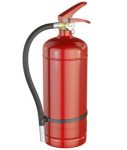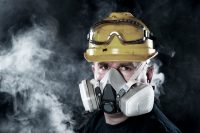Today’s workplace uses thousands of chemicals, many of which are hazardous. The resources in this section will help guide you in the safe and legal identification, storage, transport, and use of these chemicals, and in making sure that your employees right to know how to be safe around such substances is provided, as required by law.
Welding has a lot of hazards, but they’re not all directly related to the welding equipment or process. California’s Fatality Assessment and Control Evaluation (CA-FACE) program recently investigated an incident in which a welder was killed while performing a leak test after completing a welding repair. All welders can learn some valuable lessons from his […]
Welding is a hazardous activity that poses a unique combination of both safety and health risks to more than 500,000 workers in a wide variety of industries. Because it is a common operation in many workplaces, its hazards are often underappreciated. The federal Occupational Safety and Health Administration (OSHA) reports that more than four deaths […]
The EPA is proposing to reissue its hotly debated Pesticide General Permit (PGP) under authority of the CWA Section 402—the National Pollutant Discharge Elimination System (NPDES). The existing 5-year PGP expires midnight, October 31, 2016. According to the Agency, the proposed reissued PGP has the same conditions and requirements as the existing PGP. The proposal […]
On December 28, 2015, President Obama signed into law the Microbead-Free Waters Act of 2015 (House of Representatives (H.R.) 1321). This law amends the Federal Food, Drug, and Cosmetic Act by banning the sale of rinse-off cosmetics that contain intentionally added plastic microbeads beginning January 1, 2018, and by banning the manufacture of these cosmetics […]
The deadline to submit Tier II reports is March 1. Do you know your state’s reporting requirements?
Tier II reporting season is here and reports are due March 1. Watch this video to help you prepare.
Q. If we have five twenty-pound halon fire extinguishers, what are the federal regulations applicable to ozone-depleting substances (ODSs) for what we have?
by Tim Fagan The Tier II reporting deadline is approaching. This infographic provides essential information to help you determine if you need to report, along with some helpful tips for preparing and submitting a Tier II report.
Industry can expect little relief from OSHA’s respirator fit testing requirements in light of a new National Institute for Occupational Safety and Health (NIOSH) study that bolsters the Agency’s requirements and adds a recommendation that fit testing be performed for employees who lose a specific amount of weight. According to NIOSH, over 3 million workers […]
Q. How do I identify extremely hazardous substances (EHSs) and hazardous substances on EPA’s List of Lists and SDSs?









